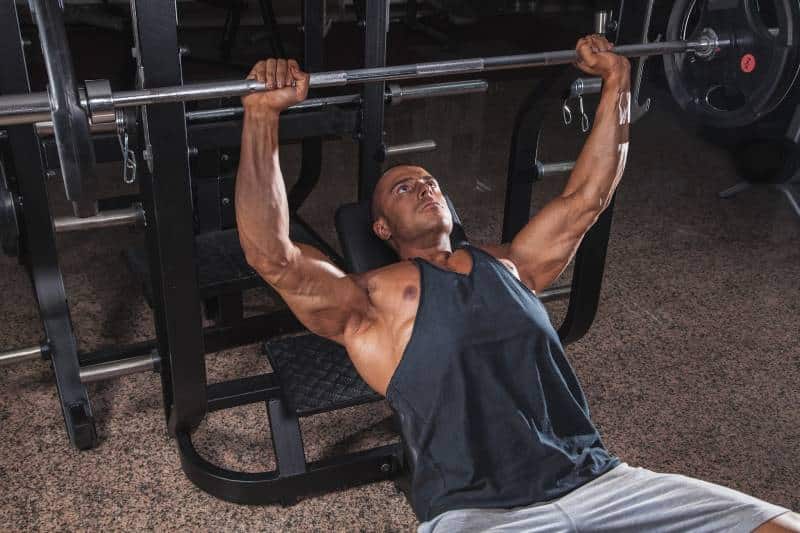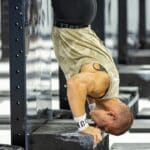If your goal is building your pectoral muscles, it’s very likely that you’re bench pressing. This is the most popular chest exercise used by fitness enthusiasts from all fitness levels. If, however, you feel that the upper part of your chests doesn’t get as much attention, or the typical bench press is too much painful for you, your best bet is trying the incline bench press exercise.
When you do a certain exercise at a different angle, you’re engaging your muscles in a different way. However, the incline bench press exercise does so much more than just activating your upper chest – it can also help minimize shoulder discomfort that sometimes comes out as a result from a flat bench press.
Here’s everything you need to know about the incline bench press – how to do it correctly, how to set the optimal angle for your workouts and how to do the exercise without getting injured.
Jump to:
- What Is an Incline Bench Press?
- What Muscles Does the Incline Bench Press Target?
- Does the Incline Bench Press Affect the Shoulders?
- How to Perform the Incline Bench Press With Proper Form
- Should You Bench Press on a 30 or 45 Degree Incline Bench?
- The Two Most Common Incline Bench Press Mistakes
- Benefits of Incline Bench Press Exercise
What Is an Incline Bench Press?
An incline bench press is a horizontal pressing exercise in which you use dumbbells or a barbell to press them away from your chest while sitting on a bench that’s angled so that your head and torso are parallel to the floor.
What Muscles Does the Incline Bench Press Target?
The most targeted muscles by the incline bench press are the pectoralis major (chest muscles), triceps and anterior deltoid muscles (front of your shoulder muscles).
Based on our testing, this is the best creatine for most people. It has the perfect dosage of creatine monohydrate per serving, which has been proven to increase muscle mass.
- Promote strength and muscle gains
- Tested for purity and safety
- Creatine has no known side effects
While doing this exercise, you’ll also use your core to help stabilize your body, and your upper trapezius muscles (your “shrugging” muscles).
Does the Incline Bench Press Affect the Shoulders?
Although the incline bench press works the shoulders as well, that’s not its main goal. Most lifters who do this exercise want to target their upper chest or the clavicular head of the upper pectoral muscles.
However, research has shown that the incline press works the shoulders much more than a flat bench press does.
How to Perform the Incline Bench Press With Proper Form
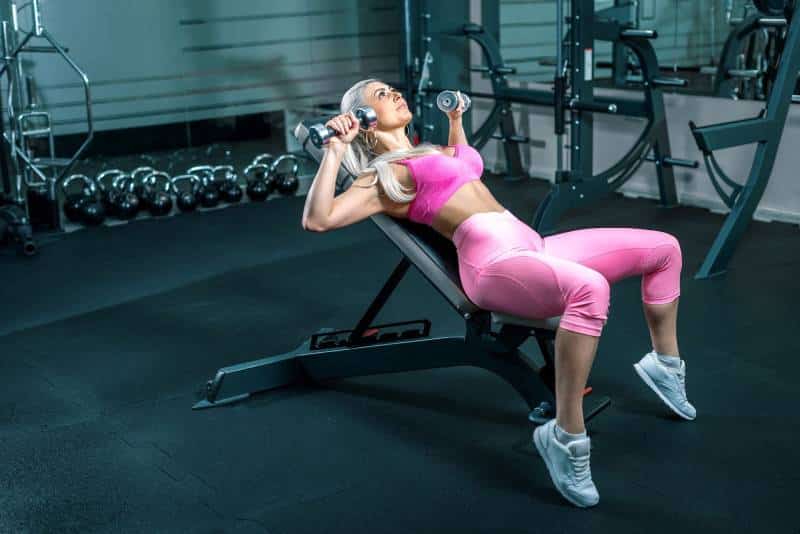
Lie on your back on an incline bench while keeping your spine in a neutral position and your feet flat on the floor.
Hold the bar with an overhand grip (with your palms facing out) that’s slightly wider than your shoulders.
Set your shoulders back and down, then take the bar off the rack and hold it directly over your chest. Engage your core.
Bend your elbows in a way to lower the bar toward your sternum, making sure you control the weight as you lower it down.
Once the bar touches your sternum, push it back to the starting position.
Keep your shoulders back and down so you can feel the press in your chest, not in the front of your shoulders.
Should You Bench Press on a 30 or 45 Degree Incline Bench?
If you’re performing a barbell incline bench press, you can do it on a fixed 30 or 45 degree incline bench. However, if you’re using an adjustable bench to do this exercise, you can choose your own incline bench press angles.
Therefore, if your goal is targeting the clavicular head of your pecs, also known as your upper chest muscles, you should mimic that range.
When performing incline barbell bench press exercises, the upper chest area is best activated at 30 degrees. If you’re using a Smith machine to do this exercise, you might want to set your adjustable bench at 45 degrees.
The Verdict
A study performed by the Journal of Strength and Conditioning Research compared the bench press angles while using a Smith machine. The results showed that there is a slight difference in the level of activation of the upper chest muscles between a flat bench and one set to 30 degrees. However, once the bench was raised to 45 degrees, there was a significant activation of the upper chest.
The truth of the matter is, regardless of which type of machine or bench you’re using, if you want to target your upper chest, the incline bench press angle should not be bigger than 45 degrees. This is so because the pecs are significantly less stimulated at these angles and the anterior deltoid muscles ( the front part of the shoulders) ends up doing a lot more of the work.
The Two Most Common Incline Bench Press Mistakes
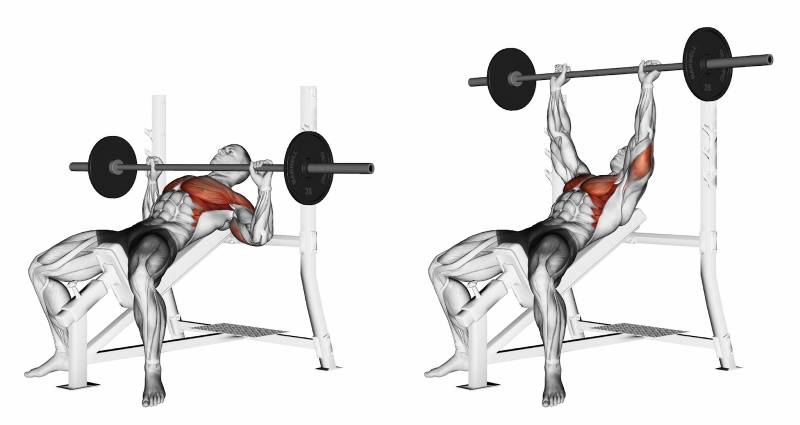
Using the Wrong Bench Angle
To help your front shoulder do less of the work and enable your pecs to do more in order to grow, it’s essential to set the incline bench press at the right angle when you do the exercise.
Based on our testing, this is the best creatine for most people. It has the perfect dosage of creatine monohydrate per serving, which has been proven to increase muscle mass.
- Promote strength and muscle gains
- Tested for purity and safety
- Creatine has no known side effects
So, what is the best incline bench press angle to best hit the upper chest?
The Best Incline Bench Press Angle for Hitting the Upper Chest
Research has shown that the right angle for the Incline Bench Press to target the upper chest.is 30 degrees from flat. This may seem like a very small angle, however, it is the ideal incline bench press position for putting the strain on your upper pecs and reducing the effect on the anterior deltoid muscles.
Many weight lifters tend to stay much too upright in the starting position while executing this chest exercise, which will cause them to hit their shoulders too much.
Think about it, a completely vertical bench position (90 degrees elevated) primarily targets your shoulders. An entirely flat, standard bench position at 0 degrees targets your middle chest. It’s easy to see that you’ll need to lower the bench quite a bit before you can hit your upper pecs.
Not Squeezing Your Shoulder Blades
As you bang out a couple of reps on the incline bench press at 30 degrees, keep an eye on the position of your shoulders. Once the front delt becomes dominant, your shoulders will round forward. In this case, the front delt is actually put in more of a position of power regarding the chest. It stands out more and it’s in a position where it can push more and get in action faster than your upper chests.
You can prevent that from happening by getting it back in its natural position – back where it belongs. This will allow the chest to get in a better position to contract. This can be done by positioning your shoulders in the right direction.
You want to make sure that whenever you press upward, you contract the shoulder blades back and down. This motion will help place your shoulder blades back in a position where they can be less dominant during the incline bench press and will put your pecs at the center of the action.
How to Do the Incline Bench Press Correctly
By setting the angle for incline bench at 30 degrees, gravity will help you to properly position your shoulder blades back and down. However, you can’t just rely on the bench to help you get there.
You still need to contract your shoulder blades actively and to ensure that this happens. Squeezing your shoulder blades will make it much easier to get your chest in a position of power and thus increase their contribution to the incline bench press exercise. Over time, this will lead to more significant chest muscle growth, especially in the upper chest.
Benefits of Incline Bench Press Exercise
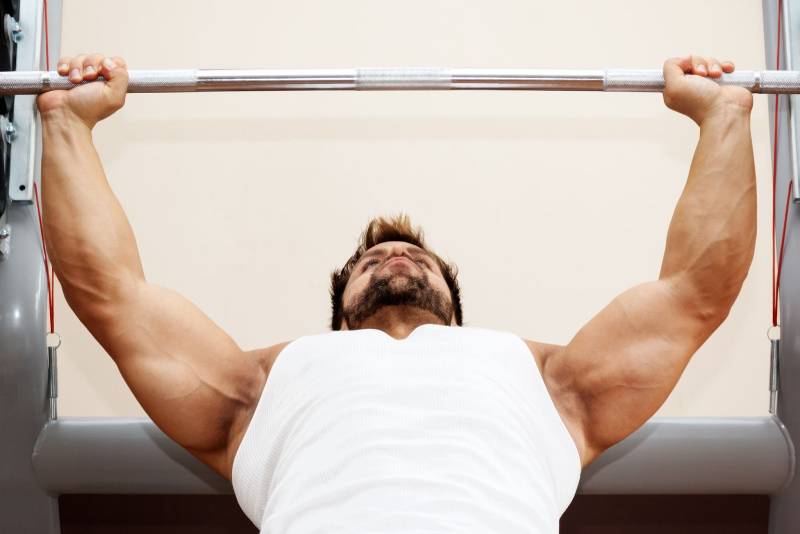
Works the Chest Muscles
The pectoralis major, which is the main muscle of your chest, has two major groups of muscle fibres, or heads: the sternocostal head (lower chest) and the clavicular head of the pectoralis major (upper chest).
The sternocostal head is the major contracting muscle in a normal, neutral bench press. The clavicular head of the pectoralis major attaches at the collarbone. One of its primary functions is lifting your upper arm.
It’s a Compound Movement
Compound movements target multiple joints and muscles simultaneously, which is not the case with single-joint movements (like dumbbell curls). Designing your workouts around compound exercises will save you time and effort as you will be working more muscles at once.
Compound movements can also make your workouts more effective as working out with heavier weights increases your testosterone production, which helps your muscles grow. What’s more, the bigger muscles you engage at the same time, the higher your heart rate will get.
This is a simple way to increase the cardiovascular intensity of your strength-training workouts.
It Is Gentler on the Shoulders
Various studies have shown that the bench press is one of the most common activities that cause pectoralis major ruptures. It’s also associated with other injuries, including an injury called “bench presser’s shoulder” that negatively affects the rotator cuff.
If your shoulders feel cranky when doing overhead presses or flat bench presses, the incline bench can be that happy medium. It works more the anterior deltoid than flat bench pressing does, which means it trains the shoulder without giving you that shoulder discomfort you’ll feel when training on a flat bench or while doing an overhead press.
It Is Easy to Modify
If using a barbell causes too much shoulder discomfort or if your gym doesn’t have an incline bench, you can easily modify this exercise and do the incline press with a pair of dumbbells or on a Smith machine.
If you don’t like how dumbbells feel on your shoulders while incline pressing with an overhand grip, you can try doing this exercise with a neutral grip (hands facing each other). And to make this movement more challenging, you can do an isometric, alternating dumbbell incline press. Hold both dumbbells overhead, lower your right hand, press it back up, then lower your left hand.



